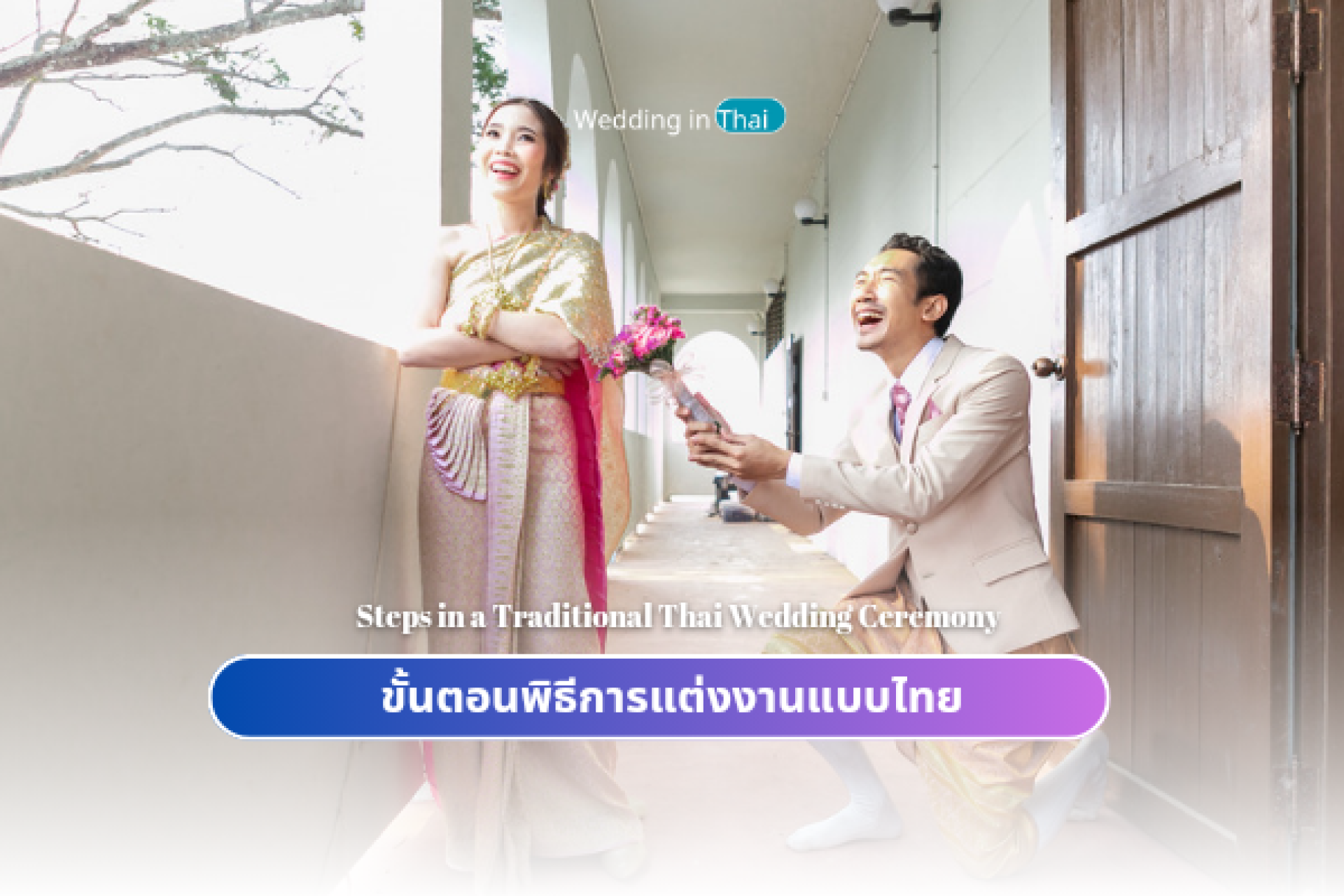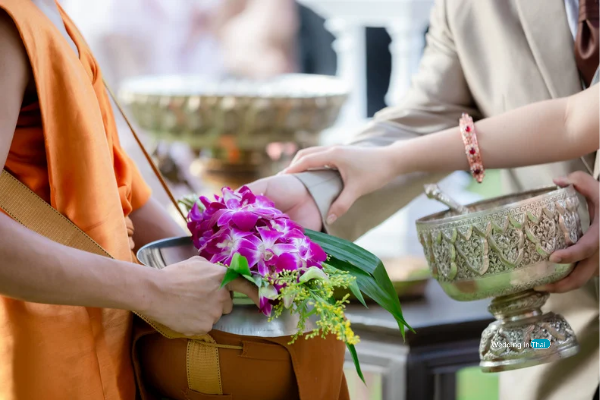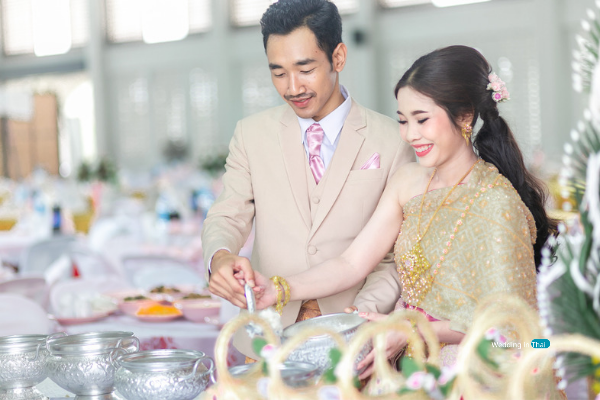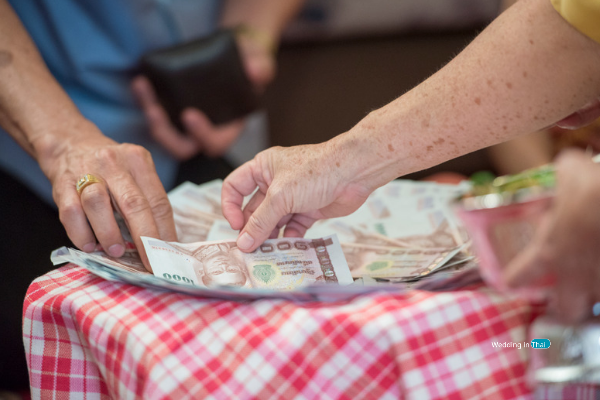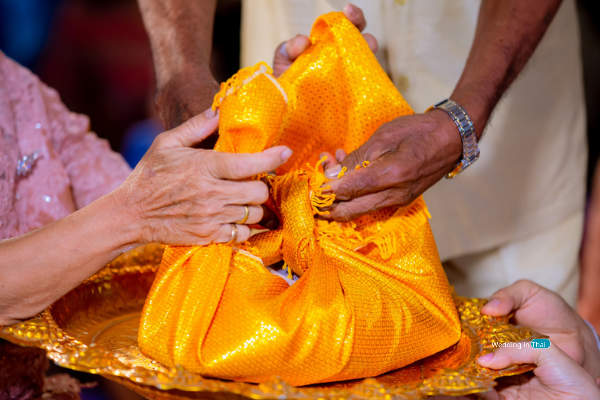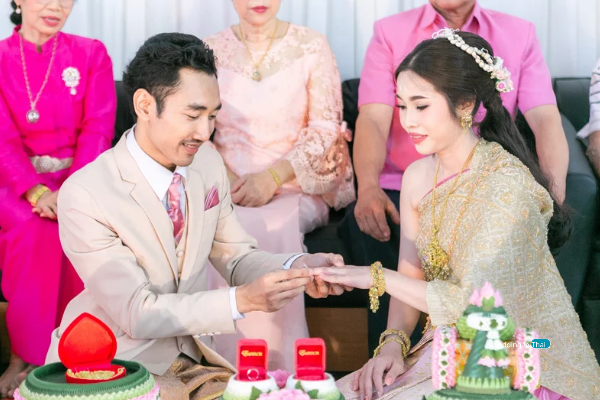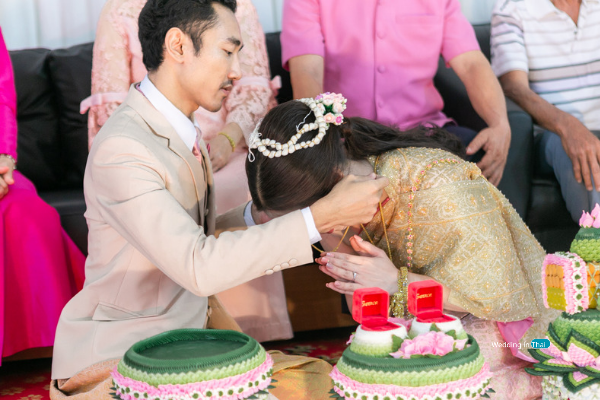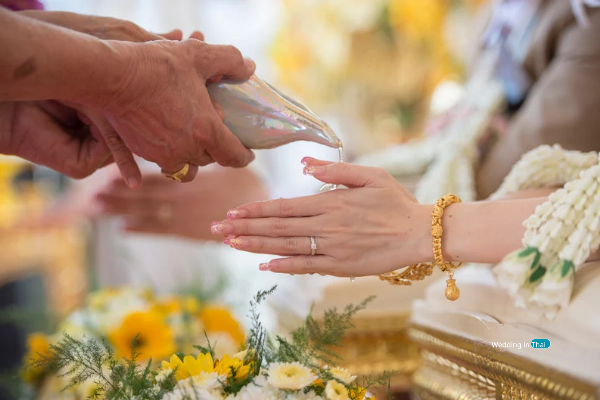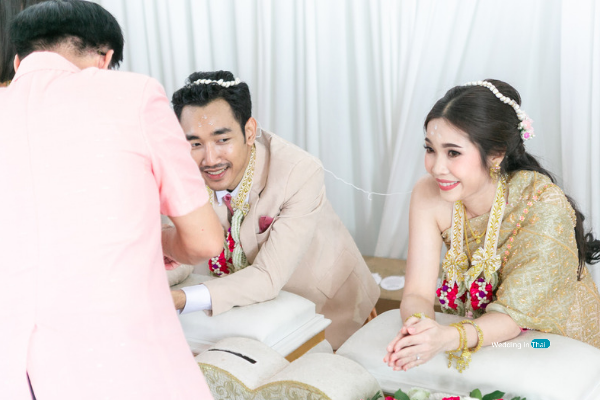Steps of a Traditional Thai Wedding Ceremony
A traditional Thai wedding is rich in culture, meaningful customs, and heartfelt rituals that have been passed down through generations. Each step in the ceremony carries deep significance and varies slightly by region. For couples preparing for this special milestone, Wedding in Thai presents a detailed guide to the traditional Thai wedding steps commonly practiced today
1. Buddhist Ceremony A Blessing to Begin the Day
The wedding day usually begins in the early morning with a Buddhist merit-making ceremony. The bride and groom, along with their families, offer food to monks and receive blessings through the chanting of sacred prayers. This is believed to bring good fortune, peace, and spiritual protection to the couple as they start their life together. After the chanting, the monks are offered a meal (known as "Phra Phuttha Phisek").
2. Procession of the Groom A Joyful Journey to the Bride
The Khan Mak procession is a lively and colorful part of the ceremony. The grooms party, accompanied by traditional music, dances, and joyful friends and family, carries trays filled with symbolic offeringssuch as Thai desserts, fruits, and the engagement dowryto the brides home. This procession symbolizes the grooms readiness to officially ask for the brides hand in marriage.
3. Engagement and Presentation of the Dowry
Upon arrival, elders from both families engage in a formal discussion of the dowry. This act of respect reflects the joining of two families and the commitment of the grooms family to the bride. The agreed-upon itemstypically cash, gold, and other valuablesare presented to the brides family in a ceremonial manner, often beautifully displayed.
4. Engagement Ring Exchange A Token of Promise
Next comes the ring exchange ceremony, where the groom places an engagement ring on the brides finger, and sometimes the bride does the same. This gesture represents the couples promise to marry and their intention to build a life together. It's an emotional moment often filled with smiles, happy tears, and heartfelt wishes from loved ones.
5. Paying Respect to Elders Gratitude and Blessings
During this Wai Khun ritual, the bride and groom kneel and offer deep respect to the elders of both families. They receive blessings, guidance, and often symbolic gifts or money. This is a moment of emotional connection and gratitude, acknowledging the role of family and community in the couples journey.
6. Water Pouring Ceremony A Shower of Blessings
In the Rod Nam Sang (water pouring) ceremony, the bride and groom wear traditional headpieces connected by a ceremonial string (Sai Monkhon) and kneel with their hands joined. Respected guests pour holy water over their hands using a conch shell, offering words of blessing and good fortune. This is considered the heart of a Thai weddingsymbolizing purity, love, and unity.
7. Sending the Bride to the Groom Starting Life Together
In the Song Tua (Sending Off) ritual, the brides family symbolically hands over the bride to the groom. Elders escort the couple to the wedding room, offering advice for a harmonious life and sometimes placing auspicious itemssuch as grains, coins, or sweetsin the room to bless the couples new beginning.
8. Wedding Reception A Joyous Celebration
In the evening, a wedding reception is often held to celebrate with extended family and friends. This may be a banquet-style dinner, buffet, or cocktail party. Guests enjoy food, music, photo presentations, and speeches. Highlights often include the cake-cutting, champagne toast, and bouquet toss, ending the celebration on a high note of joy and togetherness.
A traditional Thai wedding is more than just a ceremonyits a profound expression of love, respect, and cultural values. Each step honors the joining of two lives, two families, and a shared future built on harmony, tradition, and heartfelt blessings.
